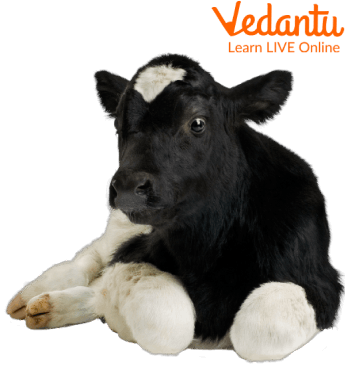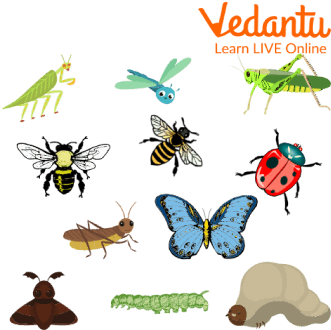




An Overview of Mutation
An organism's observable traits, or phenotype, may or may not change as a result of a mutation. Evolution, cancer, and the maturation of the immune system, including junctional variety, are among the normal and malignant biological processes in which mutations play a role. It is the change in the individual that occurs when a gene from one of its parent chromosomes fails to be copied into the next chromosome. Mutation is a very important part of the evolution process because it drives natural selection. Let’s now see more about Animal Mutations and some Examples of Mutations in Animals in detail.
What is Mutation?
A mutation is a change in an organism's, a virus's, or extrachromosomal DNA's nucleic acid sequence. DNA or RNA may be present in the viral genome. Mutations may be caused by mistakes in DNA replication, viral replication, mitosis, meiosis, or other types of DNA damage, like pyrimidine dimers from exposure to ultraviolet light. These errors can then lead to error-prone repair, particularly microhomology-mediated end joining, error-prone repair during other forms of repair, or even errors during replication (translation synthesis). Due to mobile genetic elements, mutations can also result from the insertion or deletion of DNA segments.
Examples of Mutations in Animals
A mutation is a heritable alteration to a person's genetic makeup. Any size of the change is possible. The loss, addition, duplication, or rearrangement of entire chromosomes or chromosome parts constitutes large alterations. Evolution, cancer, and the maturation of the immune system, including junctional variety, are among the normal and malignant biological processes in which mutations play a role. All genetic variety originates from mutation, which also provides the basis for the action of evolutionary forces like natural selection.
Animal Mutation
Sometimes during the prenatal development of an animal, an unexpected change can occur. These rare cases can be downright strange and can sometimes have quite a pretty effect. Sometimes these genetic abnormalities occur naturally and against all odds while in other cases these mutations are man-made and created specifically to achieve a noble goal. These man-made changes may be the result of selective breeding or, in fact, the organism changes at the genetic level.
Regardless of the history or reasons for the unique characteristics of these animals, they are among the most well-known genetically mutated individuals in history. An eight-legged goat: In Croatia, a baby goat was born with a genetic abnormality that resulted in four extra legs. This is because one of the children absorbed one of his brothers or sisters in the womb. Farmer Zoran Papari told reporters that he first thought he would go crazy when he counted the baby's feet, so he had to invite the farmer's neighbour to confirm that he was not deceived with his eyes. The goat, most likely, did not live long, but the farmer planned to keep the animal as a pet if the goat survived.

Animal Mutation
Example of Beneficial Mutant
Trichromatic vision, lactose tolerance, and HIV resistance are a few examples of advantageous mutations. There are numerous well-known instances of advantageous mutations. Here are only a couple: Many bacteria have mutations that enable them to endure antibiotic treatment. Bacterial strains resistant to antibiotics result from mutations. In a small Italian town, inhabitants have a rare mutation. one that enables a rabbit to conceal itself from predators by changing its colour. A dog's tail is born shorter than it should be due to a mutation.

Beneficial Mutant
Summary
To conclude all the conceptual understanding regarding mutations in this article, we can say that Mutation is defined as a dynamic chemical change in the genetic material of a species. These changes arise in the structure and number of chromosomes. Mutations occur naturally that are made by random errors during cellular reproduction and they are not due to environmental pressures as many fear. They can also be man-made sometimes. Therefore, from this point of view, the change in the molecular structure of a gene is called "gene mutation". We hope you enjoyed reading this article, in case of any other doubts, feel free to ask in the comments.
FAQs on Examples of Mutations in Animals
1. What is a gene mutation in animals?
A gene mutation is a permanent alteration in the DNA sequence that makes up a gene. This change can be as small as a single DNA base pair or can affect a large segment of a chromosome. These changes can alter the instructions for making proteins, potentially affecting an animal's traits or phenotype.
2. What are some common examples of mutations in animals?
There are many examples of mutations across the animal kingdom that demonstrate genetic variation. Some well-known ones include:
- Albinism: A mutation causing a lack of pigment, resulting in white fur or skin and red eyes, seen in animals like rabbits, squirrels, and deer.
- Melanism: The opposite of albinism, where a mutation leads to an excess of dark pigment, making an animal black, such as the 'black panther' (a melanistic leopard or jaguar).
- Manx Cat: A mutation in the spine development gene causes these cats to be born without a tail or with a very short one.
- Four-horned Jacob Sheep: A specific genetic mutation results in these sheep growing four, and sometimes even six, horns instead of the usual two.
3. What are beneficial mutations and can you give an example in animals?
A beneficial mutation is a change in the DNA that increases an organism's chances of survival and reproduction, contributing to natural selection. While rare, a classic example is the mutation in some insects that grants them resistance to pesticides. Insects with this mutation survive treatments and pass the trait to their offspring. Another example is the evolution of trichromatic (three-colour) vision in some primates, which improved their ability to spot ripe fruit.
4. What are some examples of harmful mutations in animals?
A harmful mutation, also known as a deleterious mutation, decreases an organism's fitness or chances of survival. A well-known example is the mutation causing spinal deformity in the Manx cat, which is directly linked to its taillessness. In dogs, a mutation in the MDR1 gene makes certain breeds like Collies highly sensitive to common drugs, which can be fatal.
5. How do mutations actually occur in an animal's DNA?
Mutations can arise in two primary ways as per the CBSE curriculum for 2025-26:
- Spontaneous Mutations: These are errors that happen naturally during cellular processes, most commonly during DNA replication before a cell divides. The cellular machinery might accidentally insert the wrong base or skip a base, leading to a mutation.
- Induced Mutations: These are caused by exposure to external agents called mutagens. Mutagens can be physical, like UV radiation from the sun, or chemical, like certain toxins and industrial pollutants, which directly damage the DNA structure.
6. What is the difference between a gene mutation and a chromosomal mutation in animals?
The primary difference lies in the scale of the genetic change.
- A gene mutation (or point mutation) is a small-scale change within a single gene, often involving the alteration, deletion, or insertion of one or a few nucleotide bases. This can lead to conditions like sickle-cell anaemia.
- A chromosomal mutation is a large-scale change affecting the structure (e.g., deletion, duplication) or the total number of chromosomes in a cell (e.g., aneuploidy), impacting many genes at once.
7. Why are most mutations in animals neutral or harmful rather than beneficial?
Most mutations are neutral or harmful because an animal's genetic code is the result of millions of years of evolution, making it a highly refined system. A random change to a complex, well-functioning system is more likely to have no effect (neutral) or to disrupt a critical process (harmful) than it is to improve it. A beneficial mutation is a rare event where a random change happens to provide a new advantage in a specific environment.
8. Can a mutation that is harmful in one environment be beneficial in another? Give an animal example.
Yes, the effect of a mutation is highly dependent on the environment. The classic textbook example is the gene for sickle-cell anaemia in humans. Individuals with two copies of the gene suffer from the harmful disease. However, individuals with only one copy are mostly healthy and, crucially, show significant resistance to malaria. In regions where malaria is common, this resistance is a powerful beneficial trait, demonstrating how a 'harmful' gene can be advantageous under specific environmental pressures.









